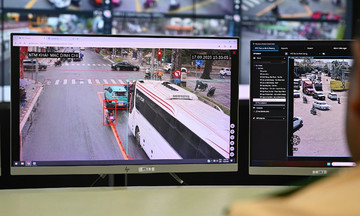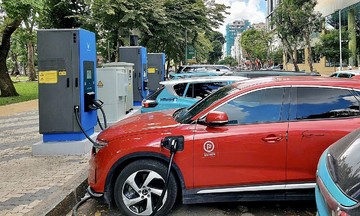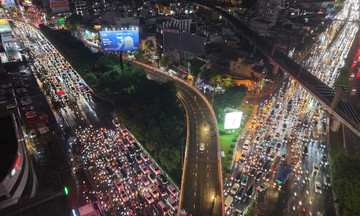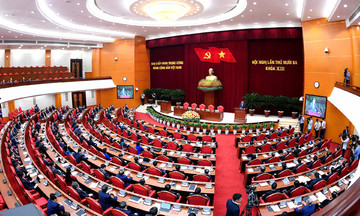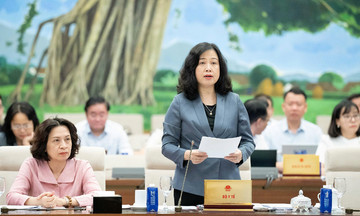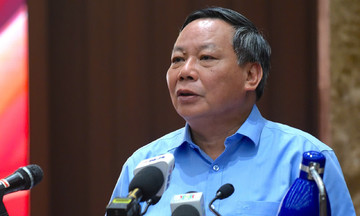The Long Thanh International Airport, constructed on 5,000 hectares with a total investment of over 336,000 billion VND, is divided into three phases. Phase one is expected to be completed by the end of this year and operational by mid-2026, with a capacity of 25 million passengers and 1.2 million tons of cargo annually.
Airports Corporation of Vietnam (ACV) has proposed two scenarios: transferring all international flights to Long Thanh in 2026, or relocating only long-haul international routes while retaining shorter routes at Tan Son Nhat.
According to ACV, transferring all international flights to Long Thanh is a strategic solution. Tan Son Nhat has been overloaded for years, with both international and domestic flights operating within a limited space, causing congestion and diminishing service quality. In contrast, Long Thanh has been planned for long-term development with a maximum capacity of 100 million passengers per year upon completion of all three phases. Even in its initial phase, the airport can accommodate 25 million passengers with modern infrastructure, a spacious terminal, automated technology, and smooth passenger flow.
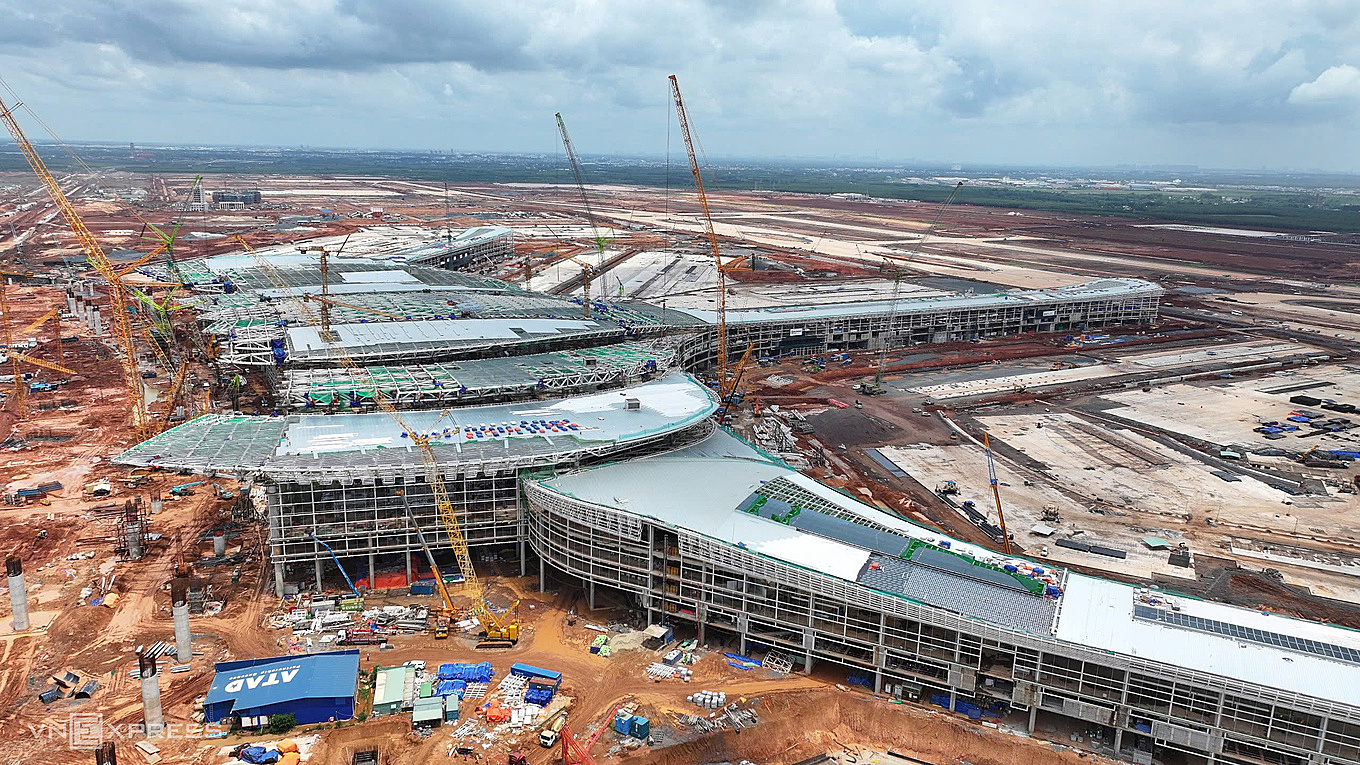 |
The passenger terminal at Long Thanh Airport undergoing roof completion in August 2025. Photo: Phuoc Tuan |
The passenger terminal at Long Thanh Airport undergoing roof completion in August 2025. Photo: Phuoc Tuan
Long Thanh’s location is also more advantageous, being separate from residential areas, having no flight time restrictions, and offering connections via expressways and ring roads, with future metro integration. ACV assesses that concentrating international flights at Long Thanh will alleviate pressure on Tan Son Nhat and improve domestic operations. Projections indicate that by 2060, passenger traffic through Long Thanh could reach 92 million if all international flights are transferred, whereas simultaneous operation at both airports would yield lower figures.
The Civil Aviation Authority of Vietnam and several international airlines support this plan, believing that centralizing international flights at Long Thanh will streamline management and optimize resources.
However, Dr. Architect Ngo Viet Nam Son, who has participated in the planning of numerous international airports, suggests that Long Thanh and Tan Son Nhat could operate independently, both handling international and domestic flights. If all international flights move to Long Thanh, the two airports would become interdependent, as domestic passengers arriving at Tan Son Nhat would need to travel an additional 40 km for connecting flights, and vice versa. "Without a fully developed connecting network, this inconvenience could diminish the new airport’s appeal," he said.
Citing the example of Montreal, Canada, Dr. Son explained that Mirabel airport was built on a large scale, and all international flights were transferred from the former Dorval airport, about 55 km away. Due to the distance and inconvenient connections, coupled with airlines' reluctance to operate there, the authorities eventually reopened international routes at Dorval. Today, Mirabel primarily handles cargo.
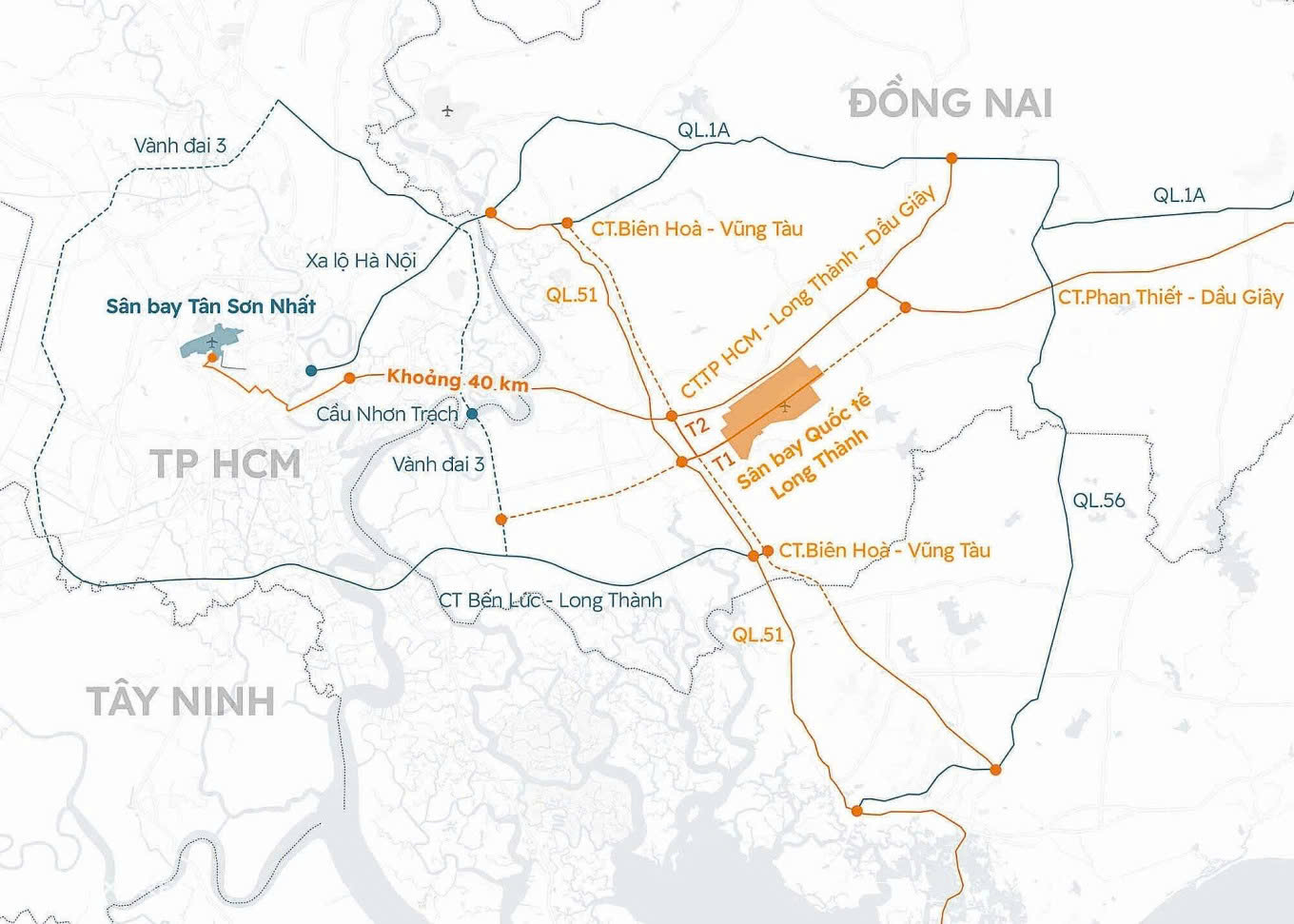 |
Distance between Tan Son Nhat and Long Thanh airports and their connecting routes. Graphics: Hoang Thanh |
Distance between Tan Son Nhat and Long Thanh airports and their connecting routes. Graphics: Hoang Thanh
According to Dr. Son, airport construction must proceed in conjunction with transportation projects, with expressways and ring roads being the most urgent. The metro and the Ho Chi Minh City - Long Thanh railway are necessary but require substantial investment and time, so priority should be given to key projects initially.
Dr. Son also emphasizes that for Long Thanh to become a major transit hub, beyond infrastructure, the competitiveness of domestic airlines must match international standards. Therefore, the airport's operational plan must be linked to the development goals of these airlines, avoiding imposed plans that could negatively impact their business performance.
"A modern airport struggles to operate efficiently if domestic airlines lack international competitiveness," he stated, suggesting that Vietnam Airlines' proposal to retain some short-haul international routes at Tan Son Nhat while Long Thanh focuses on long-haul and some domestic routes is a reasonable option to consider.
Sharing this view, Dr. Phan Le Binh, Chief Representative of OCG Japan (a provider of consulting services on transportation, urban planning, and environment), suggests considering Tokyo's experience. Previously, Haneda was Tokyo's sole airport, located about 26 km from the city center. When it became overloaded, Japan built Narita airport, 75 km away, which opened in 1978 and took over international flights. Despite metro and expressway connections, Narita's distance and the time and cost involved in reaching central Tokyo hindered its effectiveness.
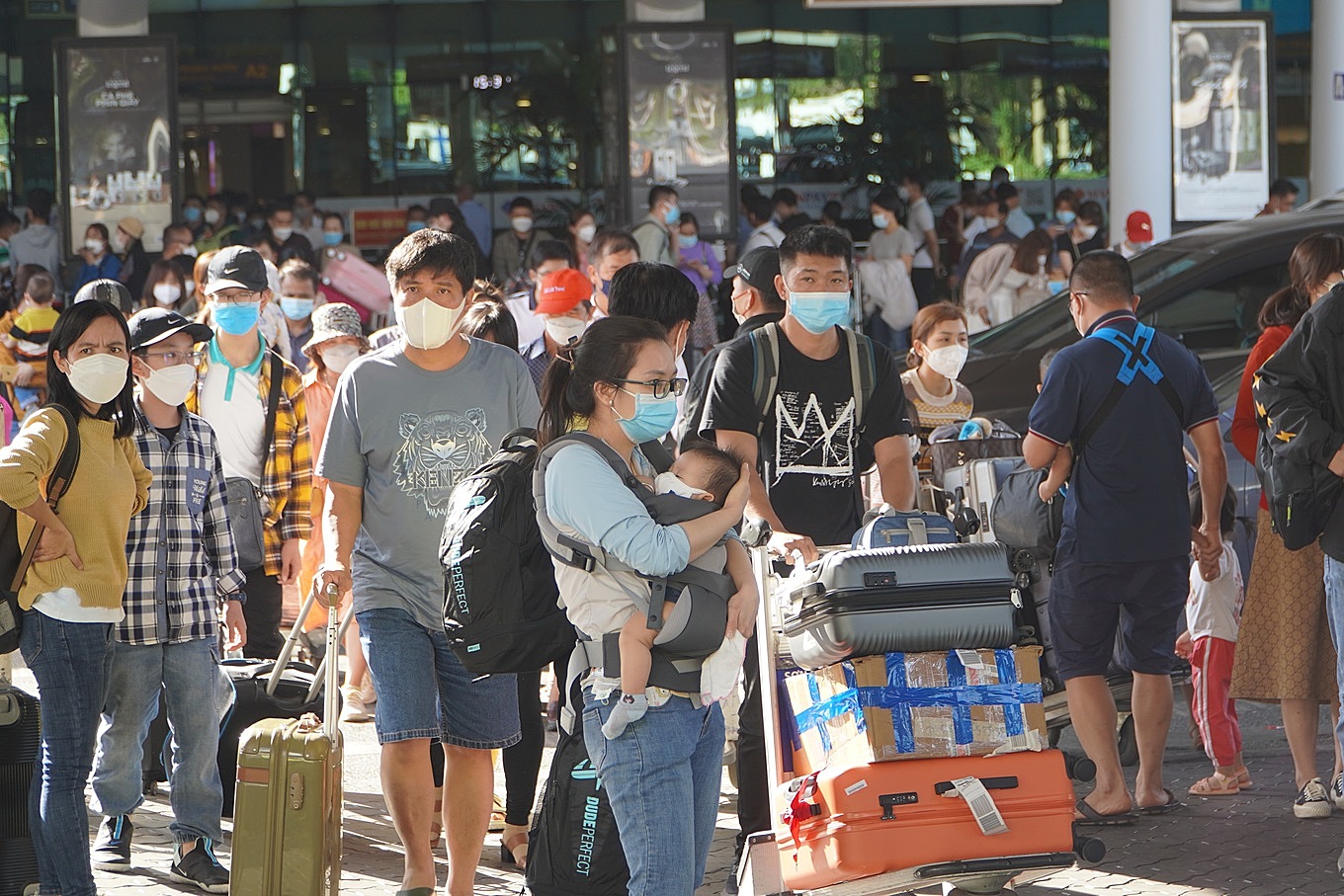 |
Domestic passengers at Tan Son Nhat Airport. Photo: Giang Anh |
Domestic passengers at Tan Son Nhat Airport. Photo: Giang Anh
After careful evaluation of passenger and airline needs, Japan added a runway at Haneda in 2010 to accommodate international flights. Currently, Japan operates both domestic and international flights at both Haneda and Narita with a suitable distribution, supporting each other.
"Simultaneous international operations at two locations require additional personnel, equipment, and costs, but Japan implemented this for passenger convenience," Dr. Binh explained, recommending that Vietnam prioritize passenger convenience when allocating operations between the two airports, especially given the limited connectivity between Long Thanh and Ho Chi Minh City.
Similarly, Associate Professor Dr. Nguyen Thien Tong, former Head of the Department of Aeronautical Engineering at Ho Chi Minh City University of Technology, suggests maintaining international operations at Tan Son Nhat for at least a few more years, particularly since Terminal 3, with a total investment of 11,000 billion VND, has recently opened, increasing the total capacity to 50 million passengers annually.
"Only when the connecting transport infrastructure is complete or Tan Son Nhat becomes overloaded should the transfer to Long Thanh begin gradually," he said, suggesting that initially, all cargo, logistics, and aviation services could be moved to Long Thanh to reduce the burden on Tan Son Nhat.
Additionally, Dr. Tong proposes exploring models from other parts of the world, such as assigning the airport to a separate management entity, potentially allowing investors to hold shares. This approach enables proactive development of strategies to attract airlines and passengers, fostering competition in service quality and operational efficiency.
Giang Anh






